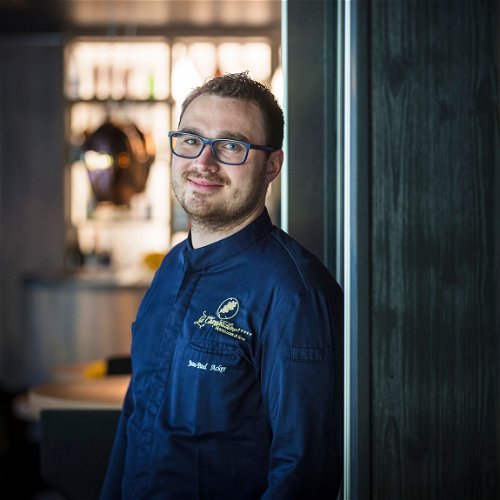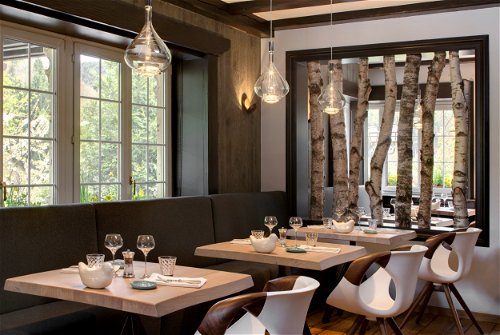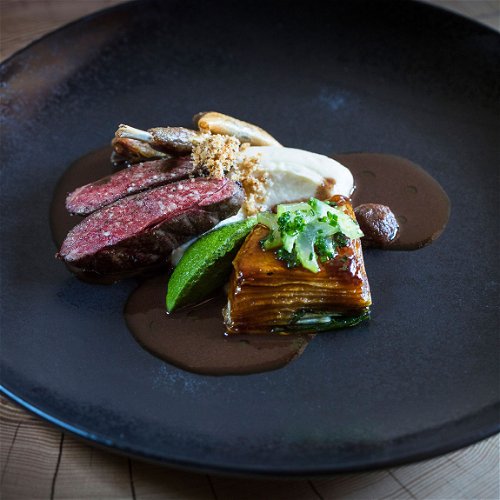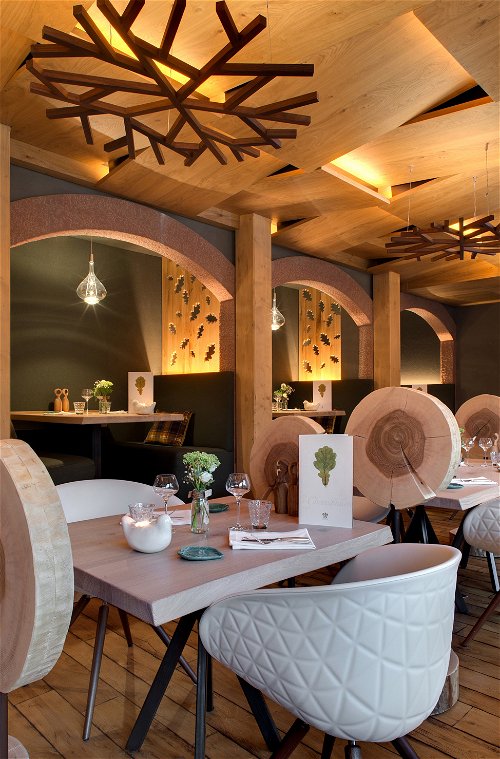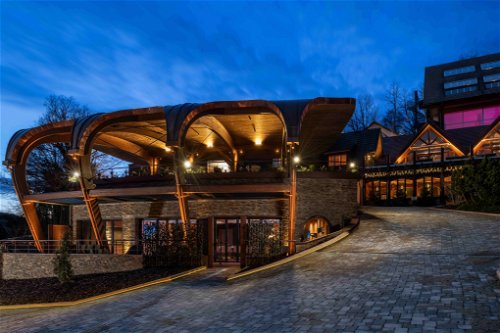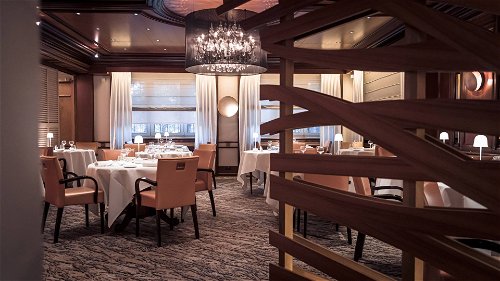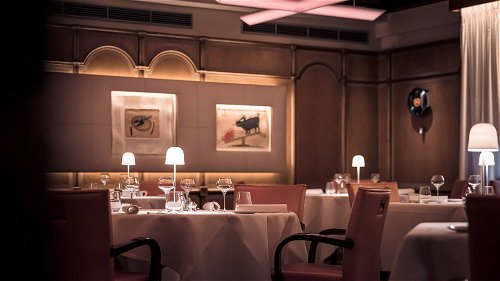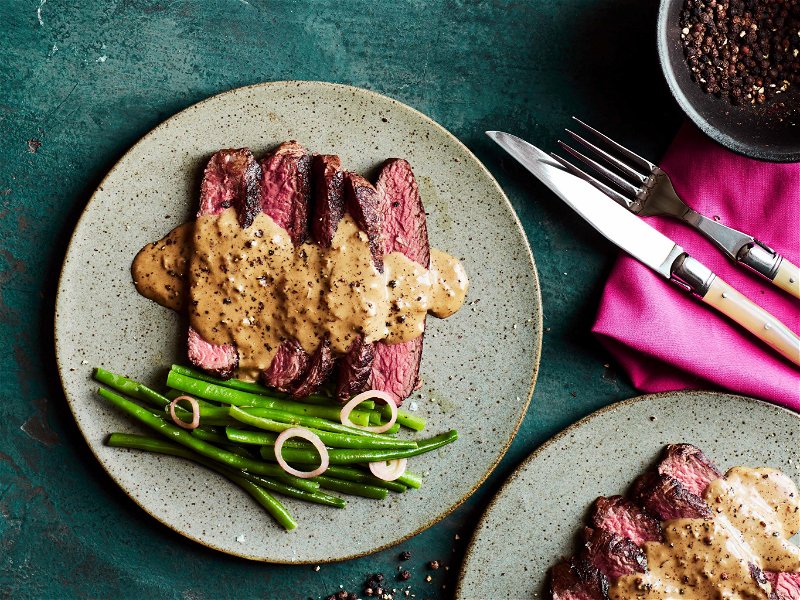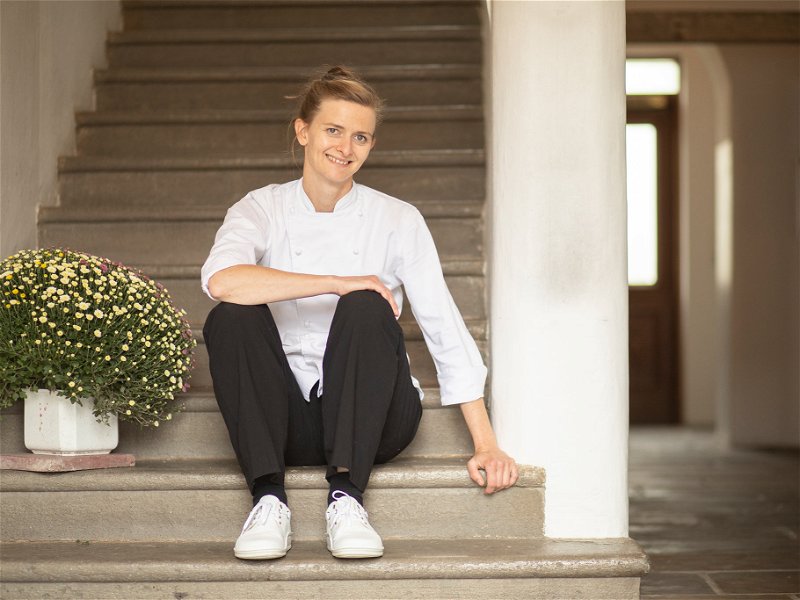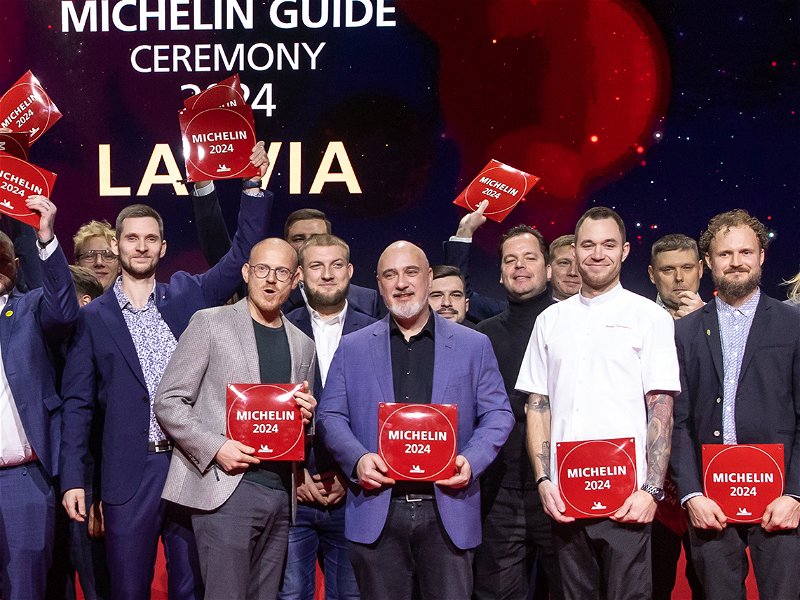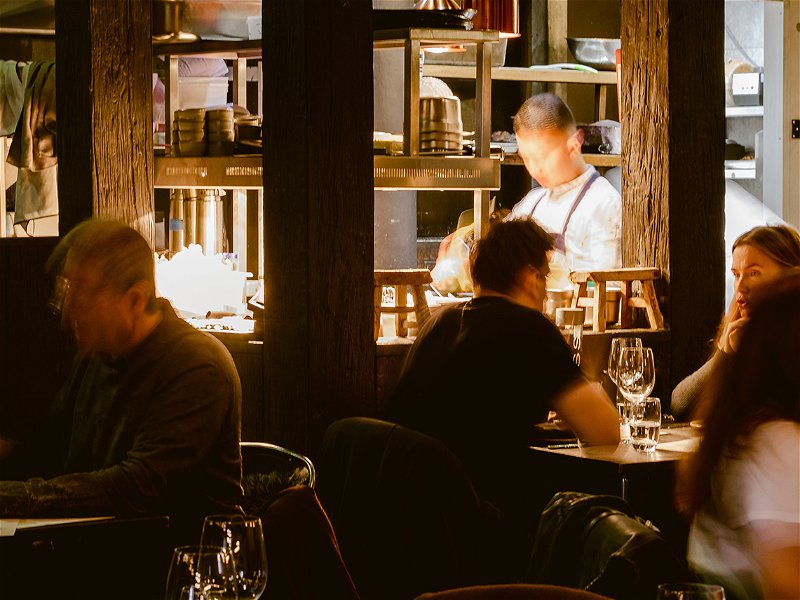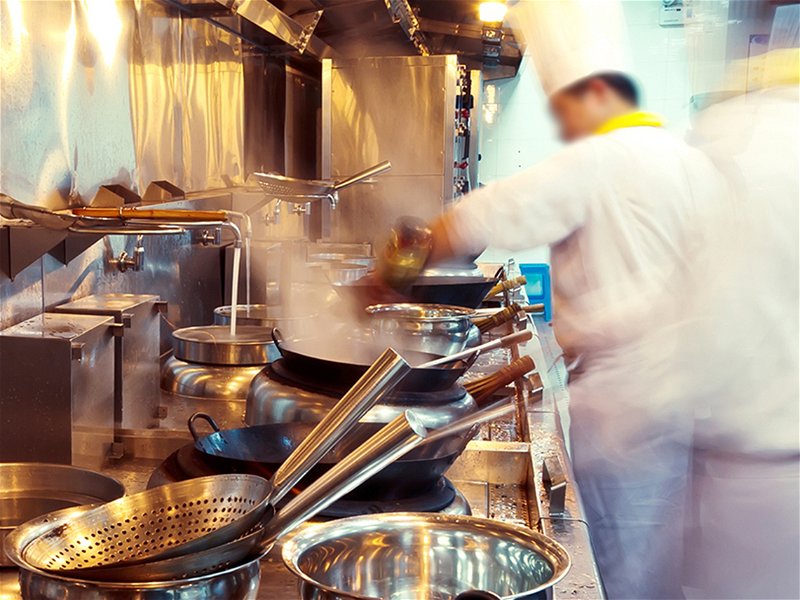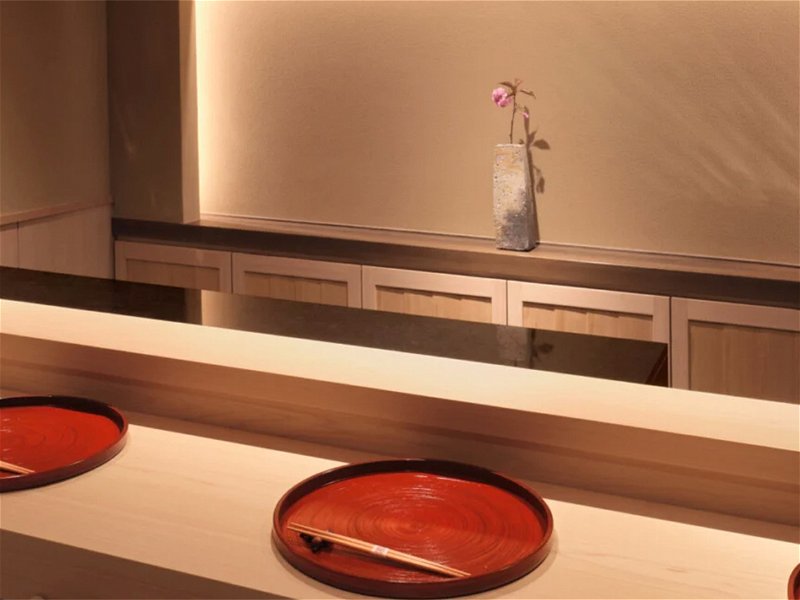French chefs prove fine-dining is well and truly thriving
Have you heard the rumour? Fine-dining is out and fast-casual is in. Non, c’est pas possible! Michelle Tchea for Falstaff looks at what is happening in the world of fine-dining.
There are many destinations in France rightfully denoted a place for “foodies”. Paris, Lyon and the South of France are densely populated regions and cities with numerous Michelin-star restaurants to back up their credibility as a gourmet’s destination where exquisite dining experiences are well-matched with excellent wine activities.
The Grand-Est region of France is known among the French as one of those destinations. Much like the Alsatian wine region which falls heavily under the shadow of big guns: Bordeaux and Burgundy, the gastronomy scene also falls under the radar when compared to The City of Light which has over 44,000 restaurants to choose from. But unlike in Paris, it is quite rare to have a bad meal in Alsace because French terroir is not only exemplified in the wine production but also in the cooking and fine-dining restaurants helmed by some of the world’s most revered chefs.
At one point, Alsace, a region in Grand-Est had more than 26 Michelin stars and to this day still boasts a steady stream of award-winning restaurants with chefs maintaining their Michelin stars for more than two decades and continuing their reign as France’s top chefs: Schillinger, Haeberlin, Nasti are just some of the names people gravitate towards for reliable and uncompromised Michelin-dining experiences in the region.
But, I hear you - isn’t fine-dining well and truly “dead” and over? Are people still travelling for gastronomic experiences and is the wellness industry taking over the culinary industry? In this part of France, chefs prove that even with evolving and contemporary times, fine-dining is relevant, restaurants are booked out and diners are not succumbing to the “fast-casual” trend.
The new “fast-casual”: Business Lunches in Michelin-star restaurants
It is easy to fall under the trap of what is trending and a few years ago many chefs threw in their chef whites and opened up fast-casual alternatives to their fine-dining restaurants. The concept took over NYC, Scandinavia and various cities in Asia with many reputable chefs opening off-shoots to their restaurants where truncated fine-dining experiences were shortened for a fraction of the price. While some of these chefs have continued along this path, others have closed their Michelin-starred restaurants all together - which begs the question - was this the time when fine-dining ultimately lost its lustre? Or did the pandemic and current tough economic times cause people to fear and fuel the rumour that fine-dining is at its end.
Some credit the recent announcement by NOMA (World’s Best Restaurant on many occasions if you value that list) to signal the end of fine-dining, however, we all know that one restaurant closing is not a representative of an entire industry - particularly since the NOMA brand continues to be grow with outposts in Australia and Asia.
For chef Jean-Yves Schillinger, two Michelin-star chef in Colmar, fine-dining still remains his industry of choice and according to the chef, his success continues because he has always focused on the customer. “My philosophy in the kitchen is very simple - to please my customers as much as possible,” says the chef of Restaurant JY’s which reopened during the pandemic in Colmar’s design hotel L’Esquisse Hotel and Spa. He continues, “Yes, the level of cuisine is constantly changing as talented young chefs arrive with new techniques, (but) it's up to me to follow the movement but also keep to my identity and philosophy”.
Despite being the middle of the week, chef Jean-Yves dining room (which happens to be in the breakfast room of L’esquisse Hotel and transformed into a Michelin-star restaurant by night), was booked out for both lunch and dinner sessions with the chef sharing that the pandemic changed very little to his business model. “The only thing that has changed (after the pandemic) is at the level of our employees who now need more time for (their) well-being than before. For my restaurant, I have always paid close attention to value for money. I prefer to have a full room than an empty restaurant because it is too expensive,” says the chef who proves that fine-dining restaurants are still relevant when operated by a 30-plus year veteran in the industry.
“In my opinion, gourmet restaurants have become much cooler than before, even if some (chefs) exaggerate with prices. For me, it is not about this, but to focus on the customer and to find products of very good quality, not necessarily very expensive, and to magnify them,” says Schillinger.
A common thread found in many Michelin-starred restaurants is offering business lunches. The same Michelin-star meal is cut short by offering quick and snappy three to five course-meals to help not only budget-conscious travellers enjoy a fine-dining experience at the fraction of the price but also allow chefs to maintain their regulars who have big expense accounts by day. At the Beau-Rivage Palace in Lausanne, chef Anne-Sophie Pic recently launched her Business Lunch, Midi Plaisir with a stellar three-course lunch served in under one and a half-hours; in Zurich, the Dolder Grand’s “The Restaurant” offers the two-Michelin-star restaurant experience by chef Heiko Nieder in 5 courses rather than eight; Chef Alain Ducasse in Paris offers a simplified Menu Jardin for Parisians on the go and there are a surprising number of Michelin-starred restaurants now offering a la carte menus instead of an non-negotiable eight to 12-course degustations - a sign of changing times perhaps?
Culinary industry meets Wellness Industry
According to McKinsley and Company, the wellness industry is rumoured to exceed more than $1.5 trillion dollars by 2025 and with this insight, restaurants and investors are thinking to heighten the culinary industry by combining it with health and wellness experiences. At the Relais and Chateau property, La Cheneaudiere Hostellerie and Spa in Alsace, food is not necessarily the main factor drawing in both French and global guests to their award-winning French property - instead, the expansive 2,500 m² spa pulls in the crowds with a promise of lazing around in the sun, chilling out in hot sauna beds overlooking the Grand-Est region and socialising with friends with a glass of Cremant in hand. Despite the 5-star luxury hotel not having a Michelin-starred restaurant, fine-dining still proves to play a major role in the hotel’s success (with owners developing a new property set to open in 2025 following more than 20-million euros investment) and a necessity to keep guests in the hotel. The expectations of the guests is to have choice according to the chef of La Cheneaudière Hotel and Spa.
Chef Jean-Paul Acker, shares that despite guests choosing their gastronomic restaurant over their more casual bistro, changes have been made to meet new budgets without compromising on quality or experience for their discerning guests. “We have reduced the number of covers in the gastronomic restaurant, in order to better control the service and avoid meals lasting too long (which our customers don't really appreciate, except on Sundays or during certain celebrations),” says chef Acker. He continues, “The price of raw materials, energy costs and increasing staff salaries makes us think of new ways to balance both quality and quantity - we ask ourselves, “what can we do better despite rising prices”. We do this by having a slightly shorter menu, opening our gourmet restaurant only for dinner and only working with local craftsmen, producers and seasonal products that evolve with the seasons. Customers are even more careful about what they eat and are attracted by organic and locally produced ingredients. This suits us perfectly, because of our approach with small producers (to support and respect their traditions and know-how) is one of our core beliefs and my philosophy in the kitchen. My menu is a veritable ode to Alsace”. Similarly, at one-Michelin star restaurant, Thierry Schwartz in Obernai, working with local producers has allowed him to stay in business for more than 17 years - perhaps a testament to how working with local farmers can increase the longevity of a fine-dining institution.
In Colmar, Le Parc Hotel, Obernai meets high demands by young French millennials who are looking for exceptional wellness experiences like those found in elaborate 5-star retreats in Asia. The award-winning Yonaguni spa is a relatively new addition to the 4-star family-run hotel by the Wuchers with a huge selection of treatments, sauna centre and indoor swimming area which ultimately get guests in the door before catering to their other interest: eating. Husband and wife duo, Cyril and Marie Bonnard create a variety of dining experiences which range from a wellness buffet for spa-goers, Sunday buffet sessions and also a gourmet dining experience by night.
So, will the wellness industry gobble up the culinary industry? With the Japanese-inspired spa booked out months in advance, gourmet experiences seem to be taking a backseat next to wellness offerings in hotels as seen around the world. But whether you consider this a bad thing - perhaps, it is not. At least fine-dining is still thriving in a country known for fine gastronomy - it just depends on the fine-dining experience you are looking for.
If you go: where to stay, eat and indulge
A relatively new addition to Alsace is L’Esquisse Hotel and Spa. The property located in the heart of Colmar offers stark contrasts to the traditional wooden timbered housing unique to the region of Alsace. Inspired by the sculpture of Auguste Batholdi (creator of Statue of Liberty), L’esquisse offers design-lovers a chance to experience high-end gastronomy with the adjoining restaurant by 2-Michelin star Jean-Yves Schillinger offers an outstanding dining experience featuring a global menu with local Alsatian grown produce. Oh and there are white table clothes in his restaurant in case you were wondering.
Le Parc Hotel, Obernai is the perfect destination for travellers who are looking for a well-balanced weekend with wellness and culinary activities of the highest level. The relatively newly opened Yonaguni Spa is an oasis within the tranquil hotel offering a sensory experience where rest and relaxation are at the forefront. From expert treatments including facial rituals and full-body massages, the whole sensory experience moves to the hotel’s restaurant, Inventive by Marie and Cyril Bonnard who share the kitchen duties and bring their worldly experiences working in Paris and Tokyo to the tiny village of Obernai.
Hostellerie La Cheneaudiere and Spa is a five-star luxury experience in Grand-Est where many consider a typical Alsatian destination. With more than 50 years of history,
The hotel is currently run by Mother and son, Mireille Francois and Nicolas Decker who are looking to expand the hotel’s wellness centre next year. The restaurant by duo Chef Jean-Paul Acker and Chef Daniel Stein work with local producers and artisans for a stellar culinary experience despite not having a Michelin-star…yet.
Where to drink
Located in between Comar and Strasbourg, Maison Zeyssolff is a nice introduction for high-quality Alsatian wine. The owners, Zeyssolff family have been passionate winegrowers since 1778 and continue the estates long history and continue to dedicate their days to manually harvesting fine grapes to produce some of the region’s best wines, including Cremants d’Alsace and unforgettable grands crus. For another vineyard rooted in history, visit Maison Jean Huttard for a peak at excellence in organic agriculture. Considered a pioneer in the development of Crémants in Alsace, the sparkling wines rival top champagnes with the family’s dedication to nurturing Mother Nature through each bottle produced.

